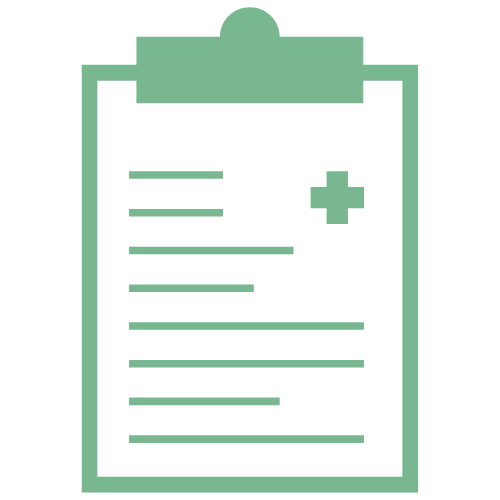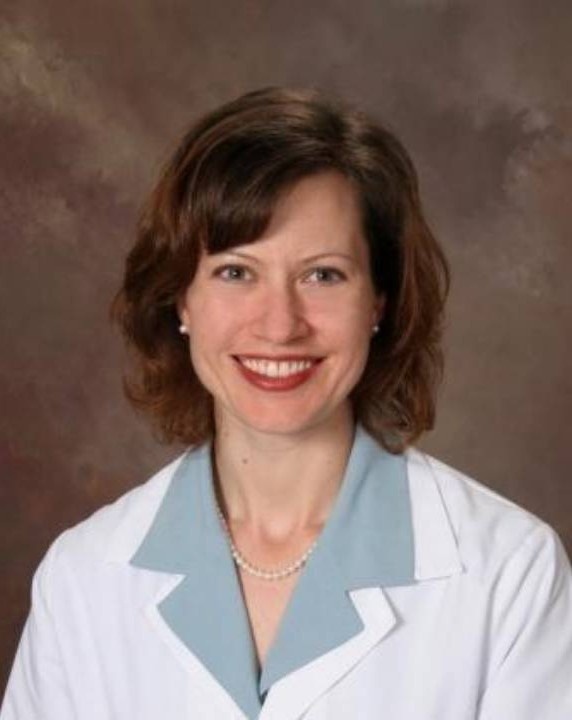Radiologists can read mammograms with confidence and clarity while reducing the risk of being sued.
And they’re doing it using hard-earned knowledge, skills, and experience they’ve worked a lifetime to achieve already.
Isn’t it time you learned how to practice with more ease and less stress?
Join the Waitlist for Mammography Malpractice Masterclass
Are you ready to learn how to practice with confidence and calm?
Hint: It’s not just about what you DO, it’s HOW you do it that makes the difference!

Part 1:
The answer to “what do I do?” usually propels physicians to ask “what should I read?” We scour textbooks. We read dozens of articles. We attend CME conferences and ask the lecturers questions to try and get answers. But what we’re really looking for is to feel better about what we do. If every day feels like a struggle, it’s time to look at the processes and protocols that make us feel like we’re on the same treadmill to nowhere.
THE EDUCATION THAT GOT YOU WHERE YOU ARE AS A DOCTOR IS NOT THE ONLY ANSWER TO LONG-TERM JOB SATISFACTION, ESPECIALLY IN A “HIGH-RISK” FIELD LIKE BREAST IMAGING.

Part 2:
You know spiculated margins are a common finding in breast cancer. You may even know what percentage of the time they are found in either malignant or benign pathology. You know breast density may reduce the ability of mammograms to detect breast cancer and can likely quote the performance statistics by breast density category.
But until you know how to manage that knowledge within a different mindset, you’ll never have enough information to practice more confidently. You will also risk alienating patients by quoting statistics and using “doctor speak.”

Part 3:
There is a better way to think about mammography. You can maximize performance, minimize risk, AND manage your mindset by applying knowledge in a practical, real-world way.
Instead of quoting one-size-fits-all statistics like “breast cancer affects 1 in 8 women,” focus on how a mismatch between patient expectations and exam performance can lead to lawsuits.
By focusing on protocols and processes, with lessons learned from an expert in mammography malpractice cases, you can put your knowledge to work in a practical way that helps patients AND physicians feel more confident about their care.
I love medical literature. In fact, I co-authored two breast imaging textbooks during and following my fellowship at Harvard’s Brigham and Women’s Hospital.
But working in busy private practices since 2006, being a physician defendant in my own breast cancer medical malpractice case, and now having served as an expert witness in over 150 medical malpractice cases, have taught me HOW to apply this knowledge, not just WHAT to learn.
To reduce risk and increase confidence reading mammograms, you have to learn HOW and WHY medicolegal cases occur.
If you only focus on imaging features like spiculated margins and irregular shape, you’re missing the bigger picture.
You can be a great radiologist through book learning and literature, but you can also learn from others’ mistakes that can cause them to be sued.
An expert (witness) can show you how to read mammograms and structure your protocols and workflow to reduce your malpractice risk and help prepare you in case you are sued.
JOIN THE WAITLISTLearning to read mammograms by thinking about lawsuits can be the secret to effectively managing risk, using lessons learned from an expert witness.
Most of us read mammograms as we were taught to do in radiology training, and hope that we won’t get sued if we read them “correctly.” But managing risk starts even before the patient walks in the door of your imaging facility. When you know how and why patients file lawsuits, you can approach your entire workflow and interpretation strategy from a new perspective.
And, you can be confident and calm even in what feels like an increasingly risky medical environment. By facing risk head-on instead of hoping you don’t get sued, you are in a position of control that helps everyone: you, your practice, your family, and your patients.
Introducing
Mammography Malpractice Masterclass:
Reduce risk and increase your confidence using lessons learned from an expert witness
Learn how to read mammograms with confident, clear communication
Mammography Malpractice Masterclass is a course for physicians who want to learn how to practice smarter, from before an exam is ordered to final report communication.
Mammography Malpractice Masterclass is the ONLY program of its kind that…
1. Teaches you how patients see breast imaging
2. Helps you understand the true risk of malpractice
3. Helps you streamline your exam order process and protocols
4. Teaches you clear communication with patients and providers
5. Helps you write reports that inform and help protect you
6. Gives you skills to support yourself if you are sued
So if you’re ready to finally focus on the big picture in breast imaging, this course will teach you how to practice smarter and with less stress.
JOIN THE WAITLISTHere’s what Gretchen’s students have to say:
"Thank you, Gretchen, for this phenomenal education. I am confident and have an established game plan to move forward.”
- Matt, neuroradiologist in Gretchen’s Expert Witness Startup School course
"This course is an organized and systematic guide to starting and expanding into expert witness work. Gretchen does a terrific job providing the context and resources to help those at every experience level. Highly recommended."
- Student in Gretchen’s course, Expert Witness Startup School
Here's how we'll help you get here:
The Mammography Malpractice Masterclass Curriculum
MODULE 1
Mammography and Malpractice by the Numbers
Radiologists overestimate the risk of being sued. This leads to fear which can cloud clinical judgment and increase stress.
Module 1 teaches you about the medical malpractice risk of breast imaging so you can practice with more confidence.
You’ll learn:
- How the risk of being sued isn’t what you might think
- The variables that can increase (or decrease) the chances of a lawsuit
- How to think differently about statistics without fear
MODULE 2
Breast Density and the Court of Public Opinion
This module highlights the history of the breast density movement and how it helps physicians understand what patients expect from mammography.
This means physicians and patients are in a great position to work together for better care, but we have to know how to communicate.
You’ll learn:
- The history of the breast density movement that led to legislation
- How patients have a 100+ year history of activism relevant to today
- The importance of the media in communicating patient-led messages
MODULE 3
Exam Order and Referral Processes
Module 3 takes a deep-dive look at your clinical order/referral process.
You can improve and streamline your facility’s referral process to provide better clinical information and aid exam interpretation while reducing risk.
You’ll discover:
- A step-by-step examination of the process from clinical order to exam
- How the radiologist can improve the quality and quantity of referrals
- Strategies to collaborate with facilities offering various imaging exams
MODULE 4
Exam Protocols and Workflow
Module 4 teaches you how to streamline your imaging exam protocols and workflow, whether at a single facility or across different imaging sites.
This knowledge is key to minimizing administrative headaches and constant problem-solving while improving care for patients through a consistent approach.
You’ll learn:
- How to evaluate your facility’s outward-facing public image and media
- Resources and specific recommendations for protocols by modality
- How to approach cutting-edge or controversial imaging such as thermography
MODULE 5
Procedure Protocols and Workflow
Module 5 takes the previous module’s focus on protocols and workflow and applies it to procedures such as biopsy, needle localization, and aspiration.
This helps you understand how the malpractice risk of performing procedures goes beyond the details of how a procedure is performed.
You’ll discover:
- Potential pitfalls in procedure performance and reporting that could affect liability
- Resources and specific recommendations for procedures by modality
- How to approach procedures from start to finish with an end goal of reducing errors/liability AND improving patient care
MODULE 6
Communicating Results to Patients
Module 6 teaches you how the Mammography Quality Standards Act dictates many key patient communication requirements. Failing to follow these mandates and recommendations can lead to lawsuits regarding alleged failure to notify patients of results by radiologists.
When you know exactly how and when to communicate results, which vary by exam type, you can help reduce the chance of a diagnosis or recommendation being missed and can improve care.
You’ll learn:
- The key difference between “must” and “may” in MQSA requirements
- How to ensure you communicate effectively with patients whether they are referred by a clinician or if they are self-referred
- Why radiologists are a key component in direct patient communication
MODULE 7
Communicating Results to Providers
Module 7 builds on the previous module’s focus on patient communication and focuses on communication with referring providers. Many lawsuits focus on alleged failure to notify patients of results and miscommunication between radiologists and referring clinicians.
You’ll discover:
- How to communicate results within the required time period and in the correct format
- How to handle different requirements for different BI-RADS categories
- Why your audit and tracking process is crucial to prove compliance
MODULE 8
Exam Reports
Module 8 teaches you how important words are in radiology reports and the importance of the BI-RADS terminology for effective communication.
We also examine the different leadership roles radiologists play in breast imaging centers and the potential liability associated with specific requirements of those positions.
You’ll learn:
- Where to find templates and other resources for lay letters
- How to use consistent BI-RADS terminology to improve care and reduce the risk of lawsuits
- How the roles of lead and audit interpreting physicians may put you at risk and how to comply
MODULE 9
Sample Case Review
Module 9 shows you common themes in many mammography malpractice cases, taken from real-life examples. You’ll learn directly from an expert witness which factors led to a lawsuit and how it may have been avoidable.
This is your chance to learn from others’ mistakes to reduce the chance of making your own. When you know what to look for, you will be less likely to fall into the common traps that can increase the risk of being sued.
You’ll learn:
- The riskiest breast density pattern
- Why the most compliant patients may be most prone to sue
- The potential pitfalls of palpable masses
MODULE 10
What to Do if You are Sued
Module 10 shines a bright light on the dark topic of being sued. The good, the bad, the ugly – your expert guide tells all and teaches you how to not only survive but thrive during and after being sued.
It isn’t easy. But it IS possible to be your best advocate, take the opportunity to learn, and be an even better doctor after a lawsuit.
You’ll learn:
- The most important things to do (or NOT) do if you are sued
- How to work proactively with your defense attorney
- How to grow from a position of strength, not fear, and continue your career better than before
Meet your Expert Gretchen Green, M.D., MMS

I've been a diagnostic radiologist specializing in breast imaging since 2006. I got started in expert witness work after receiving a call from an attorney out of the blue in 2015 and have served as an expert witness in diagnostic radiology for over 150 cases for both plaintiff and defense attorneys.
I also know firsthand what it’s like to be sued, so I’ve seen medical malpractice from both sides. I know what it’s like to help patients in the high-stress field of breast imaging AND to be a clinical leader making medicine better for patients and physicians.
I have taught hundreds of physicians how to launch and build expert witness businesses to diversify their income and put their clinical skills to work in a new way. Now, I’m bringing my medicolegal know-how to help radiologists improve communication for better breast care.
Expert witness work helped me transition to part-time clinical work in 2016 and have more time with family and for myself. It enabled me to have financial freedom to design my best life. Understanding the legal process also makes me a more informed breast radiologist.
JOIN THE WAITLIST FOR
MAMMOGRAPHY MALPRACTICE MASTERCLASS
Includes 10 modules to help you reduce malpractice risk and 2 live Q/As with an experienced breast radiologist and expert witness
Join the WaitlistFrequently Asked Questions
I’m a doctor, not a lawyer, how can I possibly understand medical malpractice?
The best way to avoid being sued is to not miss cancers, right?
How is this course different from a breast radiology CME course?
*So, can I get CME from this course, too?
How much time does the course take?
Will this course be offered again?
Is there a refund policy?
Whom can I contact with questions?
Email [email protected] and we’re happy to help!
Mammography Malpractice Masterclass is PERFECT for you if…
✅ You’re fresh out of training and want to learn early on how to decrease stress and increase confidence in mammography.
✅ You’re a seasoned veteran radiologist with years of experience but you’ve always wanted to deal head-on with your fear of being sued.
✅ You’ve been sued and you want to learn more from the experience.
✅ You’re worried about being sued and want to learn now how to reduce that risk and practice in a more informed way.
✅ You’ve taken breast/radiology CME courses but they didn’t have the medical malpractice content you really wanted to learn.
✅ You think the only way to avoid being sued is to stop doing mammography, but you really don’t want to limit your practice.
✅ You’re a medical director or serve your practice/hospital in another leadership role and it’s critical you understand medical malpractice risk.
✅ You want to practice with peace of mind, knowing you are doing good in the world and taking care of yourself, too.
If you said “yes” to any of the above, I can’t wait to meet you inside Mammography Malpractice Masterclass.
JOIN THE WAITLISTThis course is for your informational and educational purposes only and is not legal, professional, tax, financial, medical, or psychological advice. Consult with licensed professionals regarding your individual circumstances.

